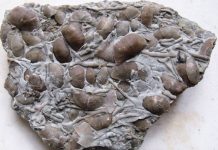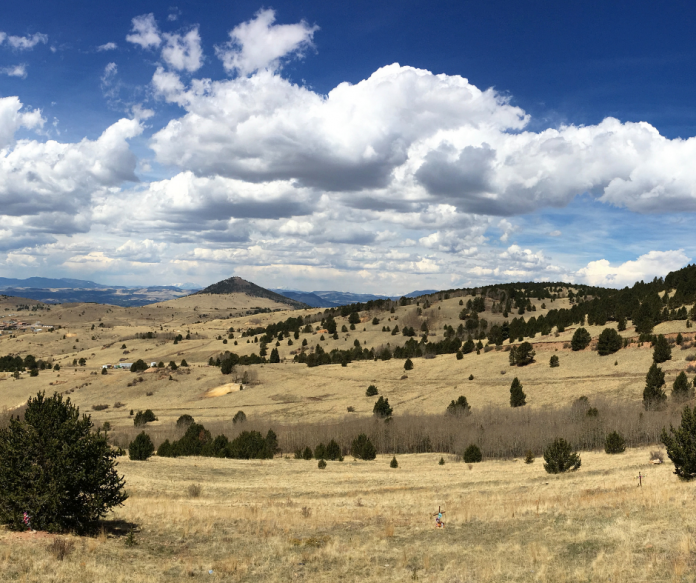
Gold mining in Colorado means that in all gold districts, the high-grade ore eventually runs out. For Cripple Creek, the end seemed to come when its last mine and mill closed in the 1950s. Most observers agreed that the Cripple Creek Mining District, then just a lonely expanse of rusted headframes, bleached timbers, and oxidized mine dumps, was on a one-way trip to the dusty archives of mining history.
But Cripple Creek surprised everyone. In the 1990s, following 40 years of inactivity, it roared back to life with a modern open-pit mine that is still producing eight tons of gold each year.
About Cripple Creek, Colorado
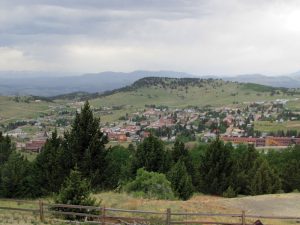
Cripple Creek is unique in its topography, geology, mineralogy, and history. At the lofty elevation of 10,000 feet on the southwest shoulder of Colorado’s iconic Pikes Peak, it is the world’s highest major gold-mining district. While most of the gold ever mined worldwide was native metal, the bulk of Cripple Creek’s gold occurred as telluride minerals.
Cripple Creek is famous for a cavernous underground vug that yielded two tons of gold and gold tellurides, as well as for miners who stole millions of dollars in high-grade ore. It’s also the birthplace of a revolutionary gold-recovery technology that revived its own fortunes and those of gold mining worldwide.
Finding Gold in Cripple Creek
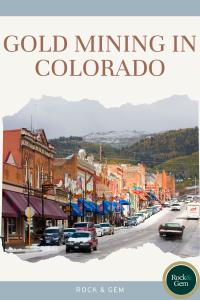
Named after a rocky creek notorious for laming cattle, Cripple Creek was Colorado’s last and biggest gold discovery. Since the 1860s, prospectors had thoroughly searched the Cripple Creek area, finding gold only in traces that were never enough to mine. In 1884, con artists salted a claim to trigger a minor gold rush that drove up land values. Although the hoax was quickly uncovered, it saddled Cripple Creek with a reputation as a good place not to find gold.
Ironically, gold—real gold—had actually been discovered at Cripple Creek that same year. Rancher Bob Womack, known locally as a “part-time cowboy and full-time drinker,” found a fine-grained, volcanic rock that graded ten troy ounces of gold per ton.
But the rock was surface float and Womack became obsessed with finding its source. He spent the next six years digging countless prospect holes without success to earn the nickname “Crazy Bob.”
But Womack ignored the jokes and kept digging.
His determination paid off in 1890 when he sunk a narrow, 30-foot-deep shaft into bonanza ore. His discovery proved to be the tip of an iceberg as prospectors rushed in to make even richer strikes.
Gold Mining in Colorado – Boom Town
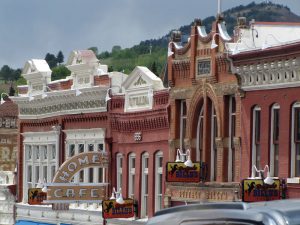
Within two years, the entire mining district had been staked and the boomtown of Cripple Creek was bursting at the seams with 10,000 residents.
By 1898, Cripple Creek had become Colorado’s fourth-largest city with a population of 25,000. That year, 300 underground mines produced 600,000 troy ounces—more than 20 tons—of gold worth $12 million. And Cripple Creek, which had yet to reach its peak, had earned another nickname—the “City of Millionaires.”
But Bob Womack was not one of those millionaires. His reputation had made it difficult to raise the capital necessary to develop his claims. Impatient and broke, he accepted several hundred dollars and a case of whiskey for claims that would eventually produce $3 million in gold.
Mineralization at Cripple Creek
The mineralization sequence at Cripple Creek began with a volcanic event some 40 million years ago. When the volcanism had run its course and the magmatic pressure decreased, the volcanic system collapsed to form a caldera. This broad subsidence filled with sediments that eventually became cemented into a breccia.
Actual mineralization occurred 12 million years later when renewed magmatic surges domed the caldera.
Super-heated mineral-rich fluids surged through the fractured breccia to emplace native gold and gold-telluride minerals in a core of rich telluride veins that was surrounded by a much larger volume of rock containing very low grades of disseminated native gold. When magmatic pressure decreased, the caldera, now richly mineralized, again subsided into a surface depression.
The caldera’s most abundant rock is phonolite, which Cripple Creek miners called “clinkstone.” Its name stems from the Greek ph?n?, meaning sound, and lithos, or stone, and literally means “sounding stone,” alluding to the ringing sound made when struck by a hammer. During mineralization, the porous phonolite was readily permeated by gold-bearing solutions.
The float that Bob Womack found in 1884 was most likely phonolite impregnated with gold tellurides.
Tellurite Minerals
Telluride minerals consist of various metal cations combined with tellurium anions. Tellurium (Te) is a rare, soft, brittle, silvery-white semimetal about as dense as iron. It bonds readily with such metals as lead, bismuth, copper, and zinc, but its greatest affinity is for gold and silver. Of the eight telluride minerals with gold, silver, or gold-silver cations, the most abundant is sylvanite, followed by calaverite.
Sylvanite (gold silver telluride, AuAgTe 4) consists of 34.35 percent gold, 6.27 percent silver, and 59.38 percent tellurium. With a Mohs hardness of 1.5-2.0 and a specific gravity of 8.2, sylvanite crystallizes in the monoclinic system as bladed crystals or granular masses with steely-gray to silvery-white colors. It is photosensitive and tarnishes with lengthy exposure to light.
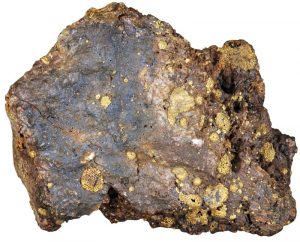
Calaverite (gold ditelluride, AuTe 2), the dominant telluride mineral at Cripple Creek, ideally consists of 56.4 percent tellurium and 43.6 percent gold but always contains some silver. With a Mohs hardness of 2.5-3.0 and a very high specific gravity of 9.1-9.4, calaverite crystallizes in the monoclinic system as prominently striated, elongated prisms with a pyritelike, bright metallic luster and a brassy-yellow color.
Calaverite has often been confused with pyrite, notably in 1893 at the Australian gold-mining boomtown of Kalgoorlie, where miners found masses of what appeared to be worthless pyrite—which they used as road-fill material. When this “pyrite” was correctly identified as calaverite three years later, Kalgoorlie hosted a second gold boom—part of which involved mining the streets.
Other gold-silver-telluride ores are petzite (silver gold telluride, Ag 3 AuTe 2), hessite (silver telluride, Ag 2 Te), and krennerite (silver gold telluride, Ag AuTe).
It is surprising that Cripple Creek’s huge gold deposit went undiscovered for 30 years. But after the caldera had been mineralized, its inward collapse left no obvious gold-bearing outcrops. Also, calaverite and sylvanite oxidize and weather into particulate gold so fine that it cannot be panned.
Mining Cripple Creek
The first Cripple Creek miners focused on the high-grade telluride veins that laced a body of brecciated, gold-bearing phonolite to which fluorite had imparted a distinctive purple color. The richest veins consisted almost exclusively of massive and crystalline calaverite and sylvanite, along with lesser amounts of native gold. Even in the dimly lit underground, these glittering telluride ores, which could grade 20 or more troy ounces of gold per ton, were easily identifiable.
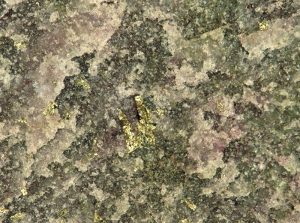
From 1895 to 1910, Cripple Creek was the world’s richest gold-mining district. Its best year was 1900 when 475 underground mines yielded 910,000 troy ounces (31.2 standard tons) of gold worth $20 million (with gold worth $20.67 per troy ounce). To follow the maze of high-grade veins and pockets, miners would eventually drill and blast 50 miles of vertical shafts, winzes and ore chutes, and some 800 miles of horizontal adits, drifts, and haulage tunnels.
The richest Cripple Creek mines were the Independence, Portland, and Cresson. The Cresson drew international attention in 1914 when miners on its 1,200-foot level blasted into a large vug. A foreman peered through the narrow opening, then suspended all mining on the level and ordered the vug sealed with a steel door.
The next morning, after miners had enlarged the opening, the mine superintendent, accompanied by a company executive and an attorney as witnesses, entered the vug. Newspapers reported” “. . . the men stepped into a wonderland of solid gold. The vug was 20 feet long, 15 feet wide, and 40 feet high. Its walls blazed with millions of gold crystals as big as a thumbnail. Pure gold boulders littered the floor amid piles of white, quartz-like spun glass.”
Most of this “gold” was actually calaverite. Two feet of powdery celestine and particulate calaverite that graded 800 troy ounces of gold per ton covered the floor. Thick layers of one-inch crystals of calaverite and sylvanite, along with flakes of native gold, covered the walls.
The Cresson Vug
A team of miners working under constant surveillance took a month to clean out the vug. They filled 1,400 small sacks with “scrapings”—calaverite crystals and flakes of gold—worth $400,000. Lower-grade material filled another 1,000 sacks and brought $100,000. The crew then removed three feet of the wall rock which graded 24 troy ounces of gold per ton.
The “Cresson Vug,” as it became known, yielded 60,000 troy ounces of gold—just over two standard tons—worth $1.2 million. The vug’s crystallized gold and crystalline tellurides were mined only for their bullion value; unfortunately, no specimens were preserved. At today’s gold price, the bullion value of the vug’s contents would approach $80 million.
Stealing High-Grade Ore
Cripple Creek’s abundance of rich and readily identifiable telluride ores led to the West’s most notable episode of “high-grading”—stealing high-grade ore.
Mine owners equated high-grading with blatant theft and, of course, they were legally correct. But the miners who worked, and were often injured and sometimes died in the dark underground, and for relatively little pay, viewed it as an earned right.
Miners smuggled huge quantities of high-grade ore out of the mines—and dozens of phony Cripple Creek “assayers” were eager to buy it, visually estimating its gold content and offering cash minus their “assay” fee. Miners who distrusted the “assayers” roasted their stolen ore on their kitchen stoves. This vaporized the tellurium and reduced the calaverite to circular “blebs” of metallic gold, which they recovered by crushing and panning.
Mine owners tried everything to curtail high-grading through underground surveillance, strip searches, threats, and even physical beatings of “assayers” who bought stolen ore. But the miners had long hours in the dark underground to devise ingenious ways to smuggle ore out of the mines.
In the end, most historians believe that the miners won. They estimate that five percent of all the gold mined in the Cripple Creek underground—perhaps a million troy ounces worth $20 million—was stolen.
Gold Mining in Colorado – 1950 & Beyond
By the 1950s, gold mining at Cripple Creek and across the nation was in dire straits. With the high-grade ores gone, the gold price fixed at $35 per troy ounce, and inflation driving mining costs to record highs, mining the yellow metal was no longer profitable. Although much mineralization consisting of disseminated gold microparticles remained in the ground, it graded only a tiny fraction of a troy ounce per ton. It was not worth mining—unless gold prices increased dramatically and improved gold-extraction technologies were developed.
Cyanidation, the use of cyanide solutions to extract metallic gold and silver from ores, had seen limited use since the 1890s. But because recovering dissolved gold from cyanide solutions was a slow, costly process, cyanidation never reached its full potential.
In 1951, Cripple Creek’s last operating gold mill donated space to a United States Bureau of Mines research team. Working on a shoestring budget, the team devised a process in which carbon adsorped gold from cyanide solutions, then a combination of heat, pressure, and ammonia-based reagents cheaply desorped it from the carbon. This process would have enormous ramifications for the revitalization of Cripple Creek and gold districts around the world.
By the 1970s, the stage was set for another gold-mining boom. The price of gold, now a free market commodity, was soaring, while advanced technologies for open-pit mining and gold recovery—including gold desorption—were in place.
Gold Mining in Colorado – Mine Rebirth
Cripple Creek began its rebirth in the early 1980s with the consolidation of the district’s many fragmented properties. After core drilling had delineated the huge, low-grade orebody, engineers designed an open-pit mine and a gold-recovery facility. After a decade of construction, the Cresson open pit, named after the original Cresson Mine of Cresson Vug fame, began production in 1995.
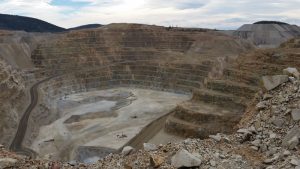
STEVE VOYNICK
Since then, the Cresson open pit has mined six million troy ounces (205 tons) of gold and continues to turn out 250,000 troy ounces per year. With ore grading just 0.027 troy ounces of particulate native gold per ton, 50 tons of ore must be mined to recover a single troy ounce. Exploiting such low-grade ores profitably is possible only with high-volume mining. At the Cresson open pit, drilling and blasting break a quarter-million tons of ore in a single shot. A fleet of 320-ton capacity trucks hauls the crushed ore to massive heaps for cyanide leaching. At the recovery facility carbon adsorbs the gold from the solution, then a heat-pressure-chemical process desorbs it from the carbon. It is then electrolytically recovered as a particulate gold-silver “mud” that is melted down and poured into 70-pound ingots of doré, a 7:1 gold-silver alloy.
About 43,000 tons of ore must be mined, crushed, and leached to pour a single ingot, and a new ingot is poured nearly every day. Each year, 19 million tons of ore yield 250,000 troy ounces of gold now worth nearly $400 million.
Since the Cripple Creek Mining District was established in 1892, it has produced 29 million troy ounces (nearly 1,000 tons) of gold and is one of American mining’s legendary stories. For anyone interested in gold mining, both past and present, it’s a fascinating place to visit.
Cripple Creek – The Impact of Mining
The towns of Cripple Creek, population 1,500, and nearby Victor, population 600, are located respectively at the north and south ends of the eight-square-mile mining district. Three museums offer mining and mineral-related displays, and an overlook park with historic mining equipment provides a spectacular view of mining operations in the huge Cresson open pit.
The premier attractions are two mine tours. At the Mollie Kathleen Gold Mine, a major producer in the 1890s, visitors descend a 1,000-foot-deep vertical shaft into the former heart of the great gold deposit. Tour guides explain underground-mining equipment and the mine’s workings, including a mined-out 600-foot-high stope. Displays include museum-grade specimens of telluride ores and high-graded, “roasted” calaverite ore with large blebs of metallic gold.
In a sharp contrast of time and technology, the Cresson open pit has an outstanding two-hour guided public tour (summer only) of the pit, crusher, leach pads, and gold-recovery facility that shows just how gold goes from ore to ingot at a modern mine.
Cripple Creek is located on Colorado Route 67 less than an hour’s drive west of Colorado Springs. For further information, visit www.victormuseum.com for the Cresson open-pit tour, and www.goldminetours.com for the Mollie Kathleen Gold Mine underground tour.
This story about gold mining in Colorado previously appeared in Rock & Gem magazine. Click here to subscribe! Story by Steve Voynick.



